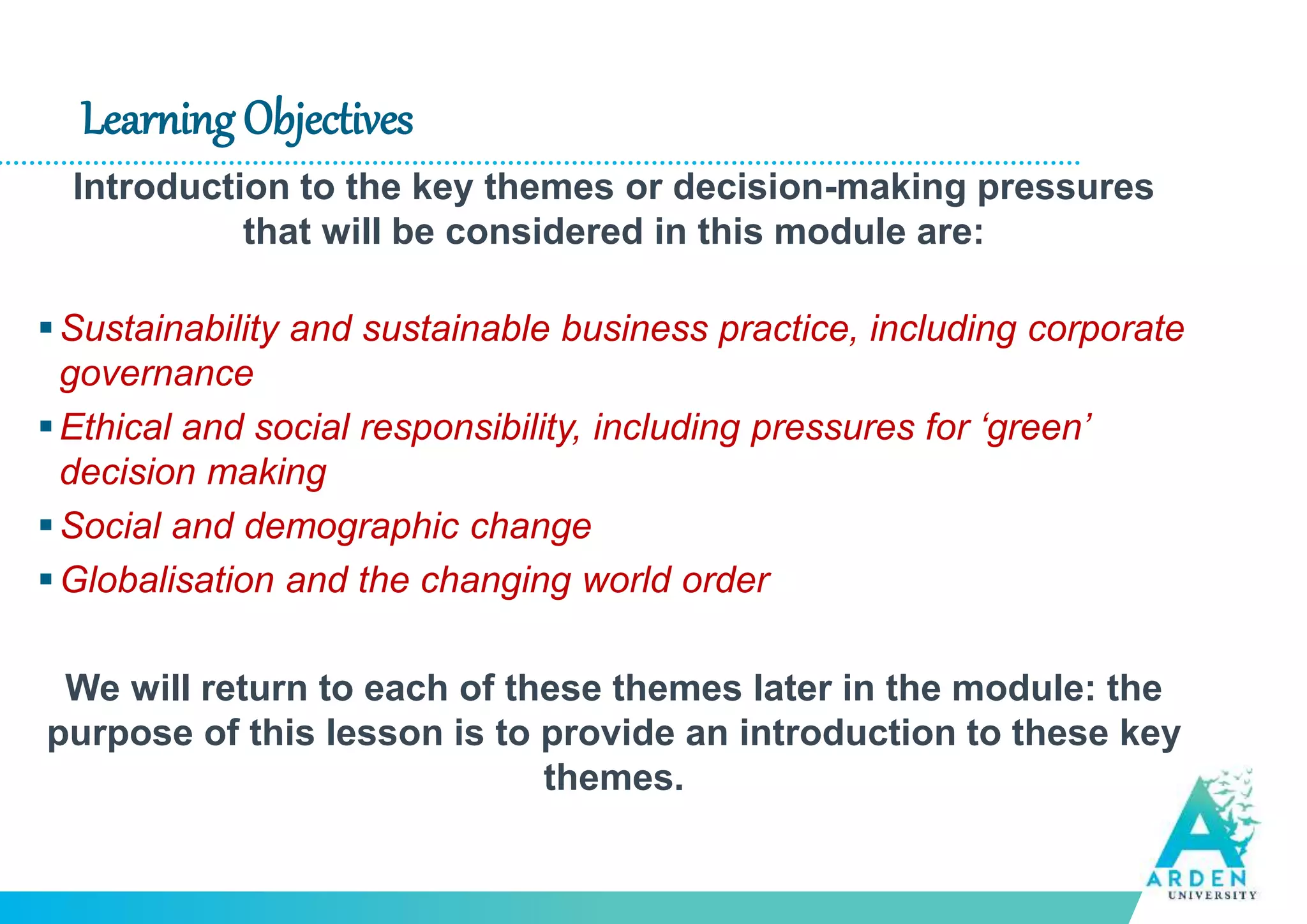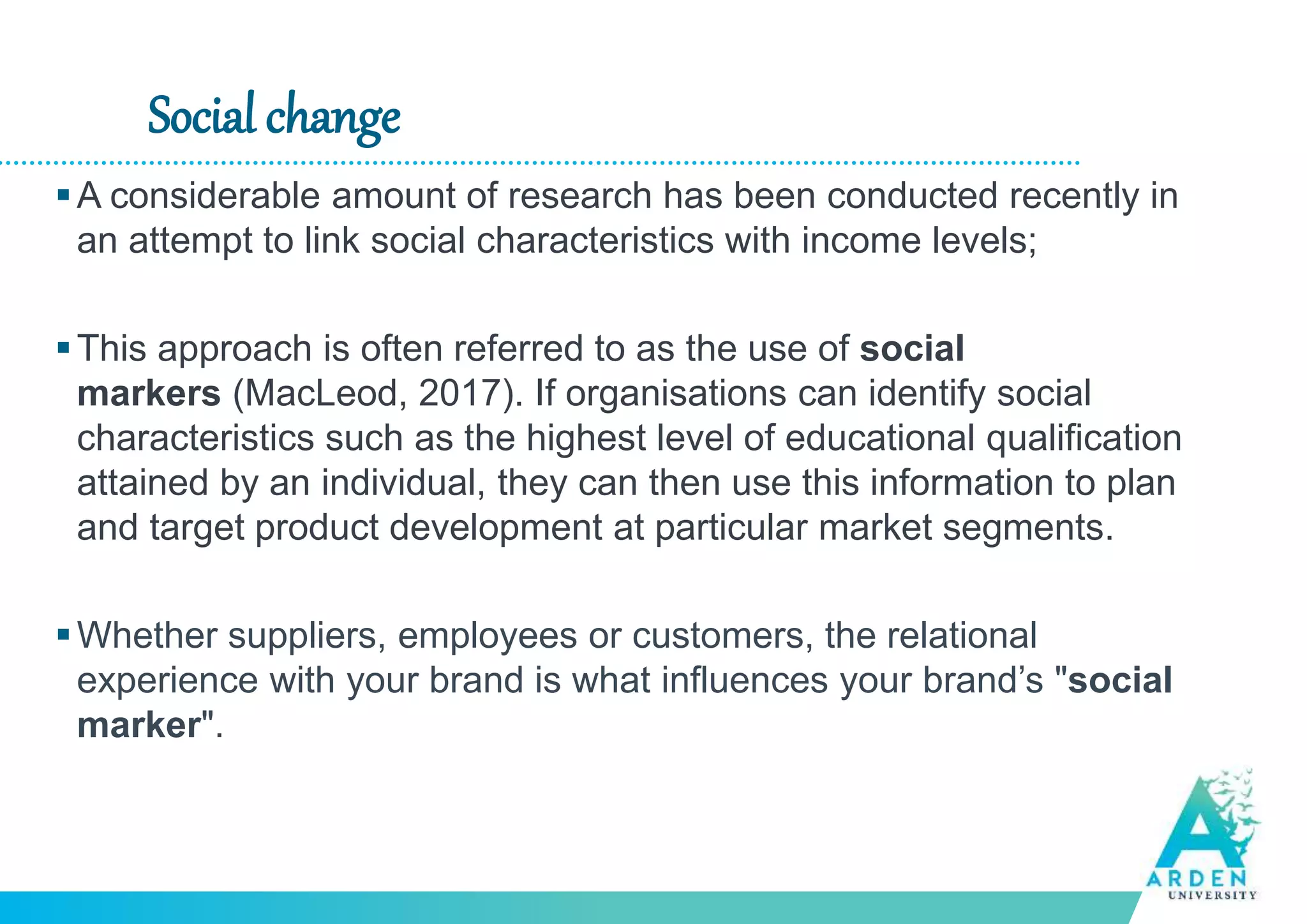This document provides an introduction to key emerging business themes and change drivers that will be covered in a contemporary management issues module. It discusses four main themes: 1) Sustainability and corporate governance, 2) Ethical and social responsibility including pressures for green decision making, 3) Social and demographic change, and 4) Globalization and the changing world order. For each theme, it provides background information and definitions. It also discusses concepts like corporate social responsibility, pillars of sustainability, social change drivers like affluence and migration, and the impacts of globalization on businesses.
















![Reference:
MacLeod, H. (2017) Social objects and social gestures, Online at:
https://www.gapingvoid.com/ . [Accessed: 19 October 2018]
“Our Common Future: Report of the World Commission on Environment and Development”.
UN Documents. n.d. Web. Retriev ed 27 June 2013. < http://www.un-documents. net/ocf-
02.htm>
Stubbs, W. and Cocklin, C. (2008) Conceptualizing a sustainability business model,
Organization Environment, 21, pp. 103 - 127.
Wetherly, P. and Otter, D. (2014) The Business Environment: Themes and Issues, 3rd
edition, Oxford, UK: Oxford University Press](https://image.slidesharecdn.com/lesson2slides-230813174405-a9a2958f/75/lesson-2-slides-pptx-17-2048.jpg)
